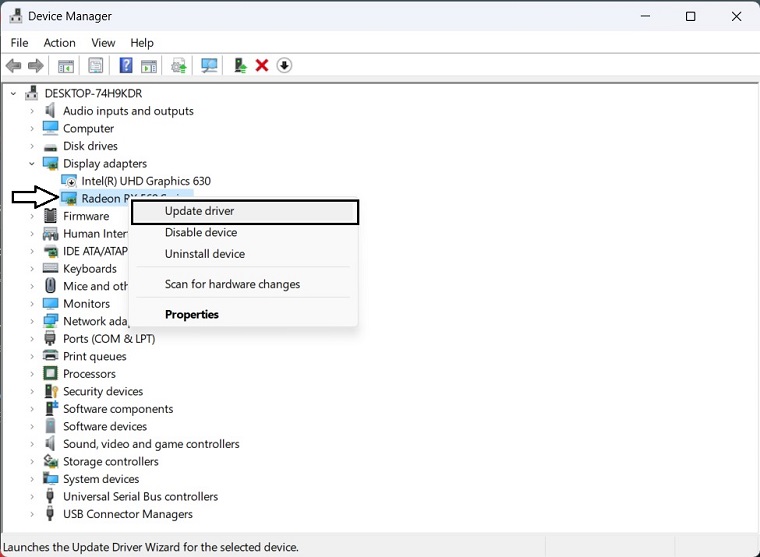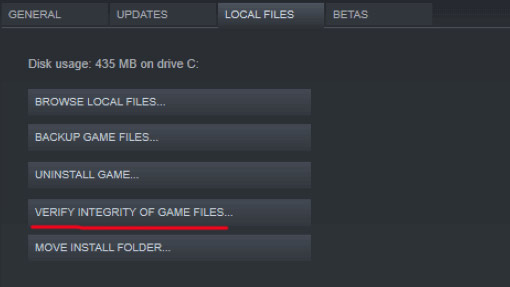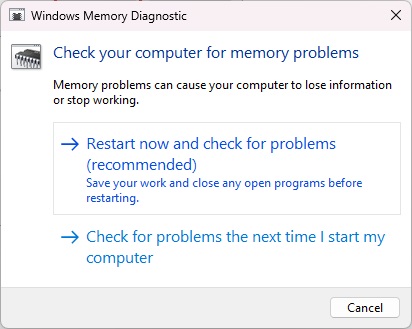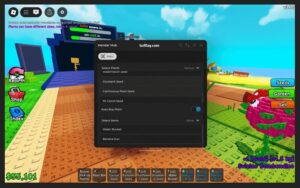Star Wars Jedi: Survivor is an action-packed game that provides an immersive experience for players. However, like any other game, it’s not immune to crashes and other issues. If you’re facing frequent crashes while playing Star Wars Jedi: Survivor on your PC, you’re not alone.
There can be several reasons why Star Wars Jedi: Survivor may crash on your PC. Some of the common causes of the crashing issue are outdated graphics drivers, conflicts with other software running on your PC, insufficient system resources, corrupt game files, or a hardware malfunction. Additionally, running the game on high settings or in fullscreen mode can also put a strain on your system and cause it to crash.
But don’t worry, there are several steps you can take to resolve the issue and get back to enjoying the game. In this article, we have come up with all the effective & working solutions that can easily solve your problem.
How to Fix Star Wars Jedi: Survivor Crashing on Startup/Launch on PC
To resolve your crashing issue, you need to
- Make sure that your PC meets the game’s minimum requirements.
- Update the game & Windows.
- Add an exception to your anti-virus.
- Update the game’s components.
- Close unnecessary background Tasks.
- Run the game as an administrator.
Minimum System Requirements
- Requires a 64-bit processor and operating system
- OS: Windows 10 64-bit
- Processor: 4 core / 8 threads | Intel Core i7-7700 | Ryzen 5 1400
- Memory: 8 GB RAM
- Graphics: 8GB VRAM | GTX 1070 | Radeon RX 580
- DirectX: Version 12
- Network: Broadband Internet connection
- Storage: 155 GB available space
Internet is required for non-optional patching, no online play.
Recommended System Requirements
- Requires a 64-bit processor and operating system
- OS: Windows 10 64-bit
- Processor: 4 core / 8 threads | Intel Core i5 11600K | Ryzen 5 5600X
- Memory: 16 GB RAM
- Graphics: 8GB VRAM | RTX2070 | RX 6700 XT
- DirectX: Version 12
- Network: Broadband Internet connection
- Storage: 155 GB available space
1. Update the GPU Driver
If you are experiencing Star Wars Jedi: Survivor crashing on your PC, an outdated display driver could be the reason behind it. Updating your display driver can be an effective solution to this problem. Follow the below steps to update your GPU drivers:
- Press Win + X on the keyboard and then click on Device Manager and expand Display adapters.
- Right-click on the graphics card, and click on Update driver.

- Choose Search automatically for drivers and update the driver.
In order to update the GPU driver, NVIDIA and AMD do release game-specific updates that you can download and install on your PC. But it takes time and if you are a newbie who doesn’t have skills then you might end up downloading the wrong drivers.
So, we suggest downloading Driver Easy software to update your graphics card driver quickly and efficiently. Unlike the device manager, it can update all drivers with a single click and has a broader database for detecting the latest drivers.
2. Force Use the Dedicated GPU
In case your PC has two GPUs, then switch to the dedicated GPU on which you want to play the game. This can help you to resolve your issue. To do so, just follow the below steps.
Nvidia:
- Right-click on the desktop screen.
- Open Nvidia Control Panel.
- Go to 3D Settings.
- Click on Manage 3D Settings.
- Open Program Settings.
- Select Star Wars Jedi: Survivor from the list.
- Select High-Performance Nvidia Processor as the preferred graphics processor for this program.
- Make sure to save changes and reboot the PC.
AMD:
- Right-click on the blank desktop screen.
- Open Radeon Settings.
- Head over to Additional Settings.
- Go to Preferences.
- Click on Power.
- Click on Switchable Graphics Application Settings.
- Select Star Wars Jedi: Survivor from the list (If the game is not visible, select Add Application to include the game)
- Select High Performance from Graphics Settings.
- Finally, reboot the PC to apply changes.
3. Disable XMP
Star War Jedi: Survivor may crash if you have enabled the XMP from the BIOS settings. So, you should disable it and see what happens. To do it, follow these steps:
- Turn off your computer.
- Then, turn it on.
- Keep pressing F12/Del/F2 button, depending on your motherboard model, until you see the BIOS/UEFI dashboard.
- Locate Advanced Memory Settings and navigate to it.
- Then, find the Extreme Memory Profile (XMP) and disable it.
- Save the settings.
- Restart your PC.
Now, run the game and see what happens.
4. Verify the Game Files Integrity
You need to verify the game file integrity because if your game files are missing, corrupt, or damaged, Star Wars Jedi: Survivor crashing becomes an unavoidable problem. This method has been proven effective by many players and hopes it works for you too. To do so, just follow the below steps;
- Open Steam > Click on Library > Go to Home.
- Right-click on Star Wars Jedi: Survivor > Click on Properties.
- Go to the Local files tab > Click on Verify integrity of game files.

5. Run the memory diagnostic tool
- Open Run by pressing Win + R on the keyboard.
- Type mdsched and click on OK.
- Click on Restart now and check for problems.

6. Lower Game Settings
Running the game on high settings or in fullscreen mode can put a strain on your system & cause the Star Wars Jedi: Survivor to crash. Lower the graphics settings and run the game in windowed mode to reduce the load on your PC.
7. Choose a High-Performance Mode
Insufficient power supply to the computer can also cause Star Wars Jedi: Survivor to crash on startup. To solve this issue, enabling high-performance mode for both graphics and power settings is recommended. The following steps can be followed to enable high-performance mode:
- Press Win + I on the keyboard to open Windows Settings.
- Go to System and then click on Display.

- Navigate to Graphics.
- Locate Star Wars Jedi: Survivor in the list. If you don’t see it, manually add it by clicking on the Browse button.
- Click on it and then click on Options.
- Tick on High Performance and then click on Save.

- Again, go to System and click on Power.
- Change the Power Mode to the Best Performance.

After trying all these steps, just restart your PC.
8. Disable Overlay Programs
Disabling overlay apps like Steam, Xbox Game Bar, and Discord can fix Star Wars Jedi Survivor crashes. These apps run in the background and use up system resources. Turn off game bar and third-party overlays to solve the issue.
Disabling Xbox Game Bar
- Click the Start button.
- Click Settings.
- Click Gaming.
- Turn off the switch for Xbox Bar
Disable Steam overlay
- Open Steam client.
- Click on Steam found on the upper left side of the client.
- Click Settings.
- Click In-Game.
- Uncheck Enable the Steam Overlay.
- Click OK.
Disable NVIDIA GeForce Experience overlay
- Open NVIDIA GeForce Experience.
- Click Settings or the gear icon.
- Turn off overlay.
Disable Discord Overlay
- Open Discord.
- Click on the gear icon at the bottom.
- Click on Game Overlay under User Settings.
- Toggle off the Enable in-game overlay.
9. Perform a Clean Boot
Sometimes third-party applications or services running in the background can interfere with the game. Perform a clean boot to start your PC with a minimal set of drivers and services, and launch the game to check if the issue is resolved. To do so, just follow the below steps;
- Press the Windows + R keys to open the Run dialog box.
- Type msconfig and hit Enter to open System Configuration.
- Go to Services > Click on Hide all Microsoft services to enable it.

- Now, click on Disable all so that the rest of the services gets turned off.
- Click on Apply and then OK to save changes.
- Next, go to Startup > Click on Open Task Manager.
- Click on the Startup tab > Ensure to select the specific task that has a higher startup impact.
- Now, click on Disable to turn it off.
After applying all these steps, just restart your PC.
10. Restore Default to Overclocked CPU or GPU
Overclocking your PC’s CPU or GPU can sometimes cause conflicts with other hardware, leading to bottleneck issues and game crashes. To check for this, it’s recommended to disable or restore the overclocked settings to factory defaults.
There are several tools available online, such as MSI Afterburner, Riva Tuner, AMD Ryzen Master, and EVGA Precision X, that can help you adjust your overclocked CPU or GPU settings.





